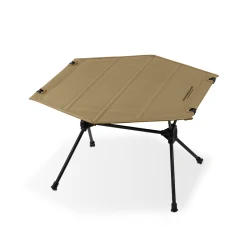Key features and considerations related to picnic tables
2024-02-19
Picnic tables are outdoor furniture designed for people to gather, eat, and socialize in a comfortable and convenient setting, usually in outdoor spaces like parks, gardens, campgrounds, or recreational areas. Here are some key features and considerations related to picnic tables:
1. Design and Structure:
- Tabletop: Picnic tables typically have a flat tabletop made of materials like wood, metal, plastic, or a combination of these. Wooden tabletops are common and may be treated for weather resistance.
- Seats: Attached benches or seats are integral parts of picnic tables. They are often connected to the table frame or legs.
- Frame and Legs: The frame and legs of the table are designed to provide stability and support. Materials such as metal or treated wood are common for durability.
2. Materials:
- Wood: Traditional picnic tables are often made of wood, such as cedar, redwood, or pressure-treated pine. Wood gives a natural and classic look but may require maintenance to protect against weathering.
- Metal: Steel or aluminum frames are common for their durability and resistance to the elements. Powder coating is often applied for added protection against rust.
- Plastic: Tables made of high-density polyethylene (HDPE) or other durable plastics are popular due to their low maintenance, resistance to weather, and lightweight nature.
3. Styles and Configurations:
- Traditional A-Frame: A classic design with a central tabletop and attached benches on each side, forming an A-frame shape.
- Circular or Round Tables: Some picnic tables have a circular or round design, which can be conducive to group conversations.
- Convertible Benches: Tables with benches that can be converted into a reclined position, allowing users to relax more comfortably.
4. Sizes:
- Picnic tables come in various sizes to accommodate different numbers of people. Common sizes include four, six, and eight-seater tables.
- Large picnic tables may have an extended length for added seating capacity.
5. Accessibility:
- Consideration for accessibility is essential in public spaces. Some picnic tables are designed to accommodate wheelchair users, with open spaces underneath to provide wheelchair clearance.
- Tables with accessible seating options often follow ADA (Americans with Disabilities Act) guidelines.
6. Maintenance:
- The level of maintenance required depends on the materials used. Wooden tables may need periodic sealing or staining, while metal or plastic tables typically require less maintenance.
- Regular cleaning is important to remove dirt, debris, and bird droppings.
7. Location and Installation:
- Picnic tables are commonly found in parks, recreational areas, beaches, and other outdoor public spaces.
- Proper installation is crucial for stability and safety. Tables may be anchored to the ground to prevent tipping or displacement.
8. Umbrella Holes:
- Some picnic tables come with a hole in the center of the tabletop to accommodate an umbrella. This provides shade on sunny days.
Picnic tables are versatile outdoor furnishings that cater to a wide range of users, from families and friends enjoying a meal together to individuals seeking a peaceful outdoor space for relaxation. Their design, materials, and features can vary, offering options to suit different preferences and settings.



